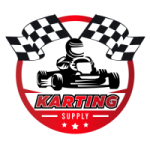- Proper gear ratio is important for balance between top end, mid-range and bottom end on a track.
- Too big a rear sprocket for a kart can lead to losing ground on longer straightaways; too small can lead to losing time off tight corners.
- Determining the right gear ratio on a given track requires trying different sprockets and working up an educated guess on the optimum ratio.
- Driver ability and chassis setup are also important factors for the gear ratio to work correctly.
- More gear is helpful when the track is wet or slow; less gear is important as the track dries and corner speeds increase.
- Front sprocket size can be adjusted for different types of tracks, but the mechanical advantages of the front sprocket are not significant.
- Running a smaller front sprocket on a tight track is helpful for ground clearance.
- The best rule of thumb is to run as small a rear sprocket as possible to maximize top speed without giving away too much on the bottom end.
Understanding the Importance of Gear Ratio in Kart Racing
When it comes to kart racing, one of the most essential mechanical factors to consider is gear ratio. Proper gear ratio can make all the difference between a winning and a losing run. A carefully tuned gear ratio is crucial for getting the most out of your kart while racing around the track. In this post, we'll explore the various factors that impact gear ratio, including sprocket size, front sprocket size, driver ability, and chassis design, and provide insight into how to optimize gear ratio for different track conditions.
II. The Role of Sprocket Size:
The rear sprocket size is one of the most significant factors responsible for kart performance. Smaller sprockets enhance acceleration, while larger ones provide higher top-end speed. The trade-off between acceleration and speed must be carefully analyzed and optimized during tuning. One way to determine the ideal gear ratio for a given track is through trial and error. Take several acceleration runs and top-speed runs at varying sprocket ratios. The sweet spot is where you find the ideal balance of speed and acceleration that allows you to complete the track in the fastest possible time.
III. Driver Ability and Chassis Setup:
Along with tuning gear ratios, driver ability and chassis setup play an enormous role in how to maximize your kart performance. A driver's skill level and the kart's chassis design influence the ideal gear ratio settings. For instance, beginner drivers may require a more acceleration-centric gear ratio since top-end speed is relatively unsafe for them and difficult to control. Meanwhile, expert drivers with better handling of the kart and understanding of the track may prefer higher top-end speeds and longer straightaways that allow them to hit high speeds and pass other drivers. Finding the optimum gear ratio is, therefore, a delicate balance between driver skill level and chassis setup.
IV. Wet and Dry Tracks:
Wet tracks significantly reduce traction, and acceleration is lowered as a result. The perfect gear ratio for a dry track won't necessarily work on a wet track as it may lead to wheelspins and understeering. If competition is in a mixed weather setting, adjusting gear ratios provides the most significant performance advantage. For instance, a ratio that balances acceleration and top-end speed may work best in wet and dry conditions. However, when the track becomes dry again, the ratio has to be reverted to achieving and maintaining top-end speed.
V. Front Sprocket Size:
The front sprocket is an essential component that finely tunes gear ratios. As with the rear sprocket, a smaller front sprocket provides more acceleration, while a larger sprocket increases top-end speed. A front sprocket can change the way the engine delivers power to the rear wheel. Thus, determining whether to use a larger or smaller front sprocket may be the key to gaining a performance advantage.
The critical importance of gear ratio becomes apparent after seeing the massive performance difference between a properly tuned kart and one that is not. With an understanding of the various factors that impact gear ratio optimization, you can now tune gear ratios better for your kart racing experience. The ideal gear ratio settings depend on many track-specific factors like driver ability, chassis setup, sprocket size, and front sprocket size. Finding the perfect balance between these all is the holy grail of kart racing. So, get out there, test your gear ratios, and see what tuning can do to improve your kart racing experience.



